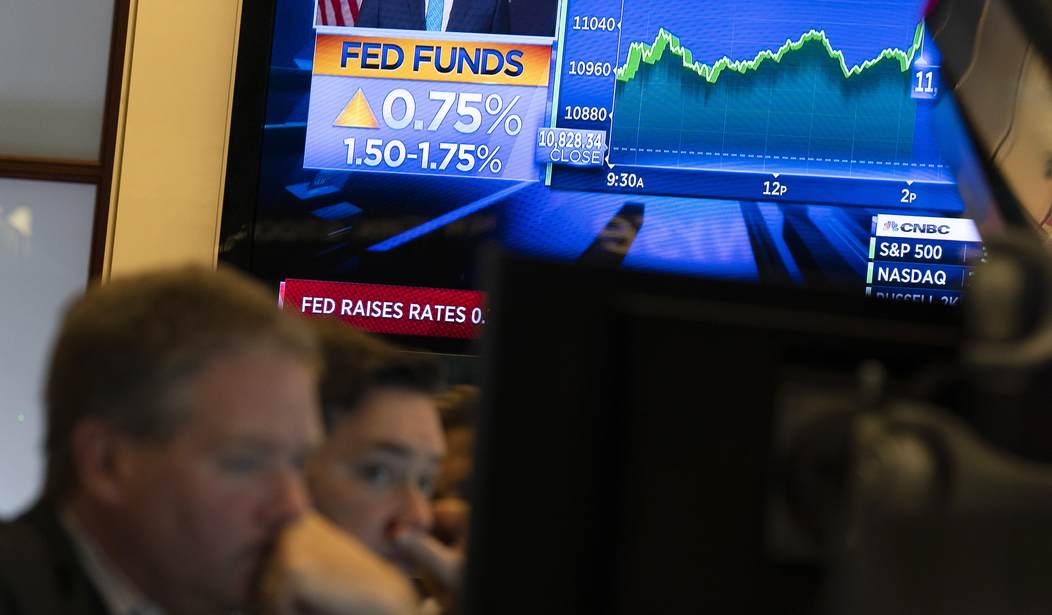The good news is that inflation came in a massive 0.1% under consensus expectations, and the bad news is pretty much everything else. Before we get to "pretty much everything else," let's look at the headline numbers that the State Media is using today to assure you that "All is well, comrades."
"The Consumer Price Index (CPI) remained flat over the previous month and rose 3.3% over the prior year in May," Yahoo Finance reported early Wednesday. That's a slight "deceleration from April's 0.3% month-over-month increase and 3.4% annual gain in prices." Both measures beat expectations by that whopping 0.1%.
The official inflation rate is still about 75% higher than the Federal Reserve's longstanding target of 2%. Fed Chair Jerome Powell said in April that getting back to 2% will be a "sometimes bumpy path," and consumers feel every bump in paychecks that still haven't caught up with inflation, depleted savings, and maxed-out credit cards.
Dig deeper into today's seemingly bullish CPI figures, and you'll get a clue about what's wrong.
That same Yahoo Finance report noted that "On a 'core' basis, which strips out the more volatile costs of food and gas, prices in May climbed 0.2% over the prior month and 3.4% over last year." What that means is, "A decline in energy prices, led by a drop in gas prices, contributed to further downward pressure on headline CPI."
Paying less at the pump is always nice and makes up the bulk of today's rosy-ish CPI numbers. But with Memorial Day in the rearview mirror, we have entered Peak Driving Season as American families hit the road to see the Grand Canyon, Mount Rushmore, or Disney World. It's the time of year when increased demand sends gas prices higher.
Recommended: Martha's Vineyard Is Running Out of Pot and I Can't Stop Laughing (and I'm Not Even High)
But that's not happening this year because nearly "half (47 percent) of Americans plan to skip their summer vacation this year, citing affordability as the main issue (65 percent)." Inflation was down a rousing 0.1% in May because half of America can't afford to go see grandma for Independence Day.
Nevertheless, markets are up big on today's news because Wall Street is hoping that the Fed will finally cut interest rates and that happy days will be here again. However, an economy enjoying healthy growth does not require super-low interest rates. Zero Interest Rate Policy (ZIRP) — which this country has been on and off of since the 9/11/2001 attacks caused a financial panic — is Washington's tacit admission that there's something fundamentally wrong and that "Free money!" is the only way to juice growth.
So now that we've been off ZIRP for a couple of years, what explains our continued economic growth, anemic as it is?
I can tell you in one word: government.
Really big government.
Read this from Jeffrey Carter's Points and Figures:
The private sector isn’t growing. What a surprise. For years everyone who is a capitalist has said when government spending ramps up, there is less room for the private sector to grow.
Professional + business services 9K
Utilities 3.2K
Information 2K
Financial activities 1K
Mining + logging 0
Wholesale trade −1.2K
Manufacturing −4K
Virtually all job growth under Presidentish Joe Biden has been in three categories: Government, Health Care/Social Assistance (more government jobs), and Leisure/Hospitality which, as Carter noted, is "mostly hourly work, not careers."
What we need is for Really Big Government to stop spending so much money we don't have and let the economy do its thing and grow for real.
What we're getting is multitrillion-dollar deficits and a "bumpy path" to nowhere.
P.S. Inflation, schminflation. Supporting PJ Media has never been more affordable with our SAVEAMERICA promotion and 50% off your VIP or VIP Gold membership at all six Townhall sites.










Join the conversation as a VIP Member